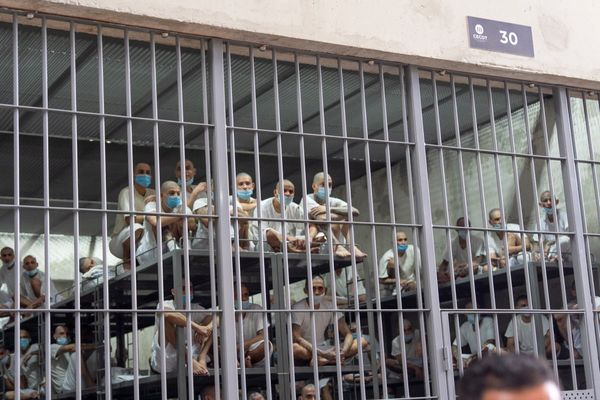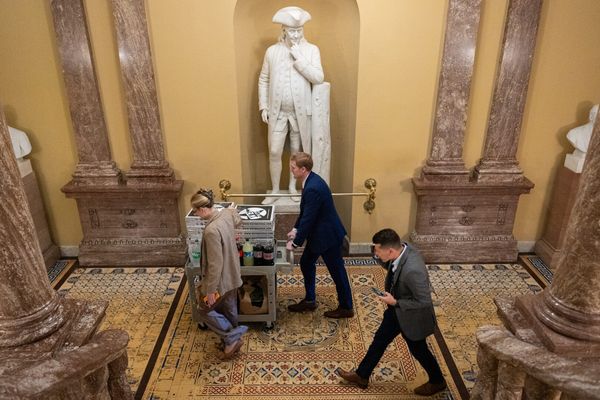On February 7, as India mourned the passing of one of its greatest singers, Lata Mangeshkar, a photo from the funeral went viral. Against the backdrop of a Mumbai highrise stood Bollywood actor Shah Rukh Khan, his eyes concealed by a pair of sunglasses and his hands raised in a dua. His manager Pooja Dadlani stood next to him, her eyes closed and her hands folded in prayer. The picture created an instant buzz. Many said on social media that it moved them, provided them a glimmer of hope, captured the country’s diversity in one frame and harkened back to a time of greater tolerance.

At a time when the politics of polarisation owns the headlines and keeps countless Indians in a state of fear and uncertainty, and Opposition parties think twice before defending pluralism and secularism, a simple photo, which would in another time have been seen as ‘normal’ or indeed ordinary, came to be viewed as extraordinary.
A similarly poignant photo captured our attention this month. It showed tabla maestro Ustad Zakir Hussain standing alone, arms crossed and back hunched, near the legendary musician and his friend Pandit Shivkumar Sharma’s pyre. Minutes earlier, Ustad Zakir had been among the pallbearers. Another image showed him carrying the body wrapped in the Indian tricolour, as his grief-stricken eyes stared into the distance.
The two curly-haired geniuses from Jammu had created magic together. Ustad Zakir’s relationship with Pandit Shivkumar went back decades, and his father used to play with the latter before. Their performances on the santoor and the tabla — soothing melody and frenetic rhythm — enthralled audiences worldwide. The photos of the funeral reminded us again that it is only through collaboration that you can create a jugalbandi; collaborations that go beyond territory, beyond religion, beyond difference.
The power to inform
Images like these have always had the power to move us. They also have the power to inform. In 1955, when a black teenager from Chicago, Emmett Till, was murdered by two white men, the photo of his impassive mother staring at her son’s mutilated body in an open casket shook the country. Widely published across newspapers, the image rallied Blacks across the U.S. and was seen to have heralded the next phase of the civil rights movement. In 2017, distressing photographs of people frothing at the mouth suggested the use of chemical weapons under the regime led by Bashar al-Assad, including the banned nerve agent sarin. They helped many understand the horrifying effects of chemical weapons.
Suffering, grief, data
Closer home, in 2021, when COVID-19 claimed an untold number of lives and stretched the healthcare system to its limits, the government, which had been caught unprepared for another wave, was busy trying to manage its own image. A series of photos that emerged at the time quickly travelled across mobile phones, social media, and newspapers around the world. One image, taken in Delhi by Reuters photographer Danish Siddiqui using a drone, showed flaming pyres at night in a crematorium next to a dark, quiet neighbourhood. The scale of loss immediately became apparent. The viral series forced the government to react. That image said what many commentators and observers had been saying for days: the government, like the neighbourhood, had been asleep when the pandemic began to ravage India.
Another image captured by Siddiqui, of a woman who had lost her husband to COVID-19 sitting on a pavement and being consoled by her two working children, especially stayed with me. Days later, when I read an essay on grief by V.S. Naipaul for The New Yorker, I thought again of that image. He wrote: “We are never finished with grief. It is part of the fabric of living. It is always waiting to happen. Love makes memories and life precious; the grief that comes to us is proportionate to that love and is inescapable.”
Today, as Indian officials slam the World Health Organization over its estimates on excess mortality due to COVID-19 in India, and defend the country’s data collection, Siddiqui’s searing images serve as a reminder that deaths are not mere statistics. There is no denying that data are important and denial of uncomfortable data is a government’s habit. But the focus on numbers alone sometimes allows us to forget that behind every death is a story of love and a life lived; our collective grief then becomes a part of the fabric of living of society.
Siddiqui’s photos also carry weight for another reason. In the last few years, many photographers have feared the death of photojournalism. In today’s world, Gen Z often consumes news through images; yet many newsrooms pink-slip photographers, tighten budgets for equipment, and provide less space for images in newspapers. In 2013, the Pew Research Centre found in a survey that the ranks of photographers, artists and videographers were trimmed by nearly half in 2012 from 2000. It is safe to assume that the situation is not very different today, if not worse.
An emotional connect
And yet, photos continue to stick with us in a way that stories sometimes do not. In contrast to factual and crisp news reports, photographs provide us an emotional connect to the story. And though we are accustomed to inhabiting little worlds of images, i.e. the worlds of social media platforms, some photos have the capacity to shake us out of our complacency and stir us, and push the authorities into action.
This is not to say that photographs can change the world irrevocably. Communal tensions erupt in India in different corners often; Shah Rukh Khan faced an equal amount of hate as he did love for that gesture; shootings of Blacks continue in the U.S. despite protests; Syrians still suffer the consequences of war; and we are probably never going to know how many died in India because of COVID-19. But photographs evoke compassion, empathy, grief, love, and sometimes stir our collective consciousness. And when we are often numbed by the atrocities around us, for a gut-wrenching or moving image to push us to continue to care and not disappear into our own safe bubbles is remarkable.







